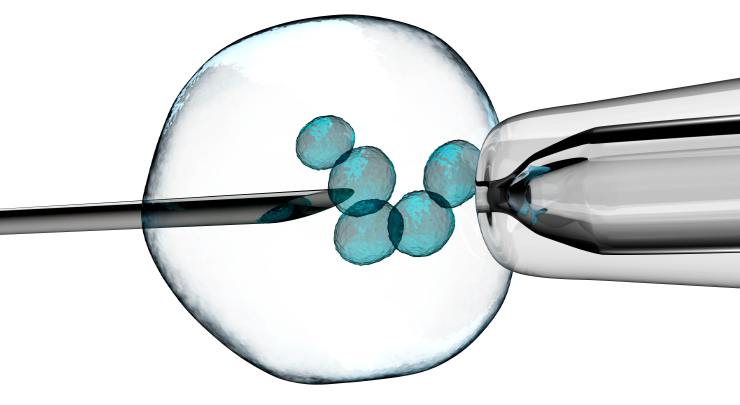
The use of Mesenchymal Stem Cells (MSCs) for healing the body is becoming more popular and the benefits of this treatment offer an immense opportunity in joint health. For joint problems such as ligament injuries, cartilage deterioration and tears, and osteoarthritis, there are stem cell treatment options available that focus on reducing the negative symptoms or attempt to fix the problems through surgical procedures that usually involve joint replacement. Mesenchymal stem cell therapy provides an alternative, non-invasive treatment option which data and clinical research have shown to have numerous positive effects with patients across the globe.
How Mesenchymal Stem Cells are Used in Regenerative Medicine
Mesenchymal Stem Cells (or MSCs) extracted from one’s body are multipotent cells, meaning that they are able to change into other types of cells such as osteoblasts (bone cells), chondrocytes (cartilage), myocytes (muscle), and adipocytes (fat). These cells work to create new bone and new cartilage, respectively. MSCs are useful in regenerative medicine treatments as they:
- display plasticity and multipotency
- induce immunomodulatory and anti-inflammatory effects
- express essential cytokines, or proteins, that are important for cellular communication
Regenerative therapy is established in the area of blood transfusion, bone marrow, tissue transplantation, and reproductive in-vitro fertilization. As such, the processes for determining and extracting MSCs has evolved greatly in the past 40 years.
How Stem Cells are Extracted
AtParagon Sports Medicine, we use an FDA-compliant method to extract Mesenchymal Stem Cells from your adipose tissue (fat cells). This is done as lipoaspiration in the office under local anesthetic; in lipoaspiration, there is no altering of the body shape since only a low volume of fat is removed. There are other methods of extracting MSCS such as bone marrow or umbilical cord extraction.
Injuries and Diseases that can be Treated
MSCs can be used to repair a number of different injuries in joints, ligaments, tendons and cartilage locations in your body.
Osteoarthritis
Osteoarthritis is a common degenerative disorder that causes the cartilage on the ends of bones to wear down over time, affecting nearly 80 percent of adults over the age of 65. This causes joint pain, stiffness, tenderness and a loss of flexibility. It can also result in the formation of bone spurs, which are physical bone growths that often affect joint mobility. Osteoarthritis is a leading cause of pain and disability across the world.
Since Osteoarthritis affects the cartilage on the ends of bones, some MSC treatment options involve differentiating the isolated stem cells into chondrocytes. These cells can then be directly injected into the articular cartilage of the affected joints. Studies have shown that these injections reduce pain, improve joint movement and increase cartilage thickness.
Knee Ligament Injuries and Shoulder Ligament Injuries
Knee ligament injuries and shoulder ligament injuries are both fairly common, especially for individuals who live a physically active lifestyle. Ligaments are both difficult and slow to heal due to their repetitive and continued use. The healing process produces a lot of swelling and the reconstructed tissue is often weaker than it was originally.
However, using MSCs has been shown to significantly improve the healing process. Studies have shown that injecting MSCs into the affected site can significantly decrease inflammation levels, help to increase production of new blood vessels, reduce scar tissue formation, control immune system response, and support other stem cells behaviors. This helps to improve the healing process while creating a stronger, more functional tissue.
Knee and Hip Cartilage Injuries
The cartilage in one’s hip and knee joints has to deal with a lot of daily wear and tear. These joints have to absorb your body’s full weight every time you walk or stand. Forces become even greater during physical activity such as running, weight lifting, or playing sports.
In the hip, cartilage is found on the end of the femur (being articular cartilage) and around the edge of the joint to hold your femur in place (known as the labrum). In the knee, cartilage is found on the distal end of the femur (also articular cartilage) and on top of the tibia (the meniscus). The breakdown of these can lead to knee and hip cartilage injuries and cause joint pain and osteoarthritis.
Since MSCs can convert into chondrocytes, or cartilage building cells, they can be a great aide to heal cartilage wear and tear. When cartilage is damaged, it is known as a lesion. The severity of lesions varies from a soft spot in the cartilage to a full tear down to the bone. When articular cartilage is damaged and heals, it often is less slippery and thinner which can limit joint movement. Injecting MSCs directly into the damaged cartilage can create hyaline-like cartilage, restoring much of the previous function. With regard to meniscus injuries, using MSCs along with arthroscopic surgery showed increased cartilage regrowth and thickness.
One can see the many potential applications of Mesenchymal Stem Cells. Though only discovered 40 years ago, MSCs have been reviewed by the FDA for a number of regenerative therapies all of which show great promise. Because these MSCs can be obtained easily and differentiate into whatever the body needs- whether it is blood cells, liver cells, and even bone and ligament cells (to improve tissue healing, relieve joint pain, and restore overall joint function after an injury)- it is a wonder there is not more drive for FDA approval. All this progress for MSCs is just the tip of the iceberg in terms of treatment and prevention.
https://www.ncbi.nlm.nih.gov/pmc/articles/PMC33462...
https://www.ncbi.nlm.nih.gov/pmc/articles/PMC48809...
https://www.ncbi.nlm.nih.gov/pmc/articles/PMC54934...
https://www.ncbi.nlm.nih.gov/pmc/articles/PMC42892...






